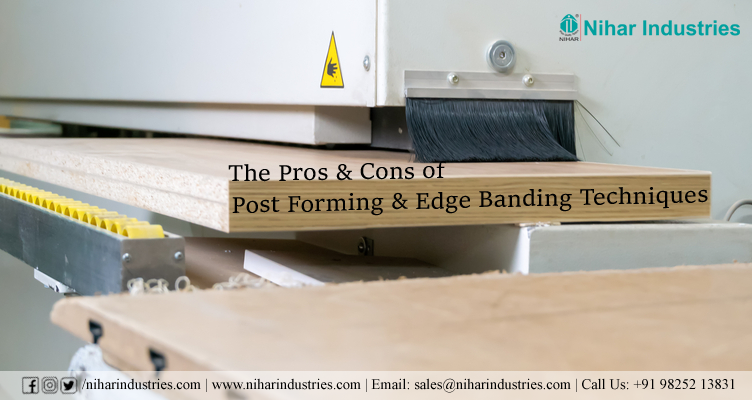Post Forming and Edge Banding Techniques are two of the most common types of working techniques that are used in the woodworking industry. Postforming or postforming refers to a definite manufacturing process in which a laminate sheet is bended over a substrate, like a medium-density fibreboard (MDF) or a particleboard with the aim of coming up with a seamlessly perfect curved edge. This post forming technique is frequently used while making laminated countertops, cabinetry, and other types of furniture surfaces.
On the other hand, edge banding or edge trimming is something that is used for covering the exposed parts and edges of the wooden panels or boards using a very thin strip of wood, PVC or other material. The goal of edge banding is mainly to enhance the look, appearance, functionality and durabilityof the edges through providing a decorative and protective layer.
If you are thinking of investing in a Post Forming and an Edge Banding machine, it is important that you first learn about the pros and cons of these manufacturing techniques. This will help you to determine which machine is going to be suitable for your specific operations.
Post Forming
Pros
- With post forming, you get to come up with seamlessly smooth edges that can deliver you visually appealing products. Since there are no visible seamsor joints, it naturally boosts its aesthetic appeal.
- Post forming can naturally boost the durability and robustness of the edges through a process of bending and shaping. In this way, the edges become highly resistant to damages caused by impacts and their lifespan is enhanced.
- Post forming technique ensures better design flexibility since it can help to form rounded edges. Designers can explore a diverse array of options in terms of shapes and contours when they use post forming.
- Since there are no joints or seams, dust, dirt and other particles do not accumulate in them, which makes them easy to clean.
Cons
- As post forming is done mainly with laminate materials, there is a limitation in terms of the materials for this technique. Postforming is not suitable for metal or solid wood components.
- Post forming is a costly method as it requires skilled labour and specialized machinery, which can eventually increase the product cost.
Edge Banding
Pros
- Edge banding is a versatile method and it can be used for numerous materials like wood, MDF, plywood, and particleboard.
- Edge banding is more cost-effective when compared to post forming as it does not require specialized equipment. Moreover, it can be accomplished with pre-made edge banding components.
- The protective covering that is created with edge banding can be used for enhancing the durability of the edges and preventing them from cracking or chipping.
- Edge banding offers excellent customization options in terms of design styles, colours, patterns and finishes.
Cons
- Edge banding leads to visible joints since it involves working with another strip of material and adding it to the edge.
- There are only limited contours and shapes that can be achieved through edge banding.
- The edge banding can be deteriorated in time due to moisture if it is not properly sealed.
- The installation of edge banding is often very time consuming.


